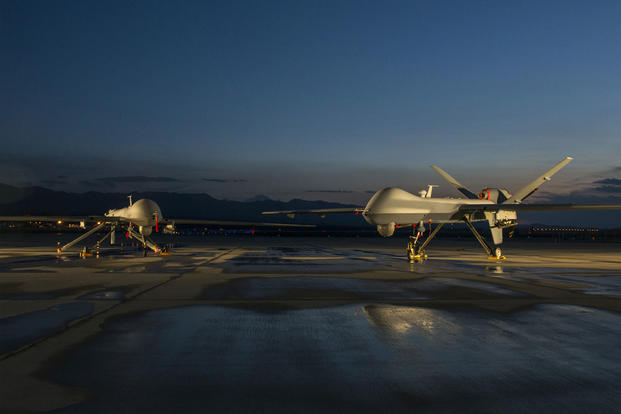ORLANDO -- The Air Force wants to operate its fleet of unmanned aerial vehicles more efficiently, and is looking for ways to reduce the number of airmen needed to manage them while still getting better intelligence collection.
“We’re going to change the game -- I am working with the whole of the Air Force to build a strategy and an architecture that gives us more ISR for less people, for less money,” said Lt. Gen. Steven L. Kwast, the commander of Air Education and Training Command.
It’s about “more situational awareness to be able to do more things...more efficiently,” Kwast said during a media roundtable here during the Air Force Association’s Air Warfare Symposium.
During the wars in Afghanistan and Iraq when intelligence, surveillance and reconnaissance missions were greatly needed for troops on the ground, drones such as MQ-1 Predators and MQ-9 Reapers were the heavy hitters in overwatch, Kwast said. But, he noted, that was just a band-aid solution at the time.
“The [remotely piloted aircraft] … requires much more architecture than, say, an F-16 squadron,” Kwast said. While the ratio of people to aircraft in manned aviation is roughly 1.5 to 1, he said, it takes about 10 people to operate one UAV at any given time.
Related content:
- Drone Milestone: More RPA Jobs Than Any Other Pilot Position
- Air Force Seeks to Change How Drone Pilots Train, Fly
- Air Force's New Intelligence Chief Explains Vision for Future of ISR
“It is manpower intensive in a big way, and of course it’s very vulnerable to satellite comm[unications], to kinetic problems, to the [theater] it’s deployed to,” Kwast said.
He continued, “It doesn’t mean we have to live with that. We need to change that, because it’s too expensive. I have to be able to project power at a cheaper price point than my adversary, or I’ll be outspent.”
Last year, Lt. Gen. Darryl Roberson, then the head of AETC, said the service had more jobs for MQ-1 and MQ-9 drones than any other type of pilot position, and these communities were slated to grow even more in years to come. With the MQ-1 officially retiring from service March 9, more emphasis will be placed on Reaper crews, officials have said.
Additionally, officials recently met to pick the next enlisted airmen slated to fly the RQ-4 Global Hawk.
The Air Force Personnel Center will decide on 40 new airmen -- an increase from last year's pool -- out of 134 applicants by the end of February, officials said.
While the Air Force is facing a pilot shortage, which includes the RPA field, the manpower levels need to be refined to understand where there are gaps in the enterprise, Kwast said, reiterating more can still be done with less..
The Air Force is now collecting data on how to best dictate a future strategy, but first needs to “know the elements that make this effective,” Kwast said, which could include leveraging new technologies, or perhaps artificial intelligence, to “wean ourselves from this massive manpower-intensive architecture we’re in.”
-- Oriana Pawlyk can be reached at oriana.pawlyk@military.com. Follow her on Twitter at @oriana0214.














